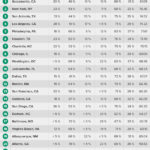By Jill Cornfield
CNBC, June 18, 2019.
There are more resumes to compete against. Here’s how to tailor your resume to take advantage of the algorithms that reject and choose candidates.
You use Siri and Alexa, aka artificial intelligence, to find pizza or get the forecast. Now, AI is a deep but unseen part of your job hunt.
Companies increasingly use AI to cut down on guesswork. Instead of sorting through thousands of resumes, they can instantly seek out those with the resumes that match what employers are looking for.
That’s great for them, but how does that help you?
It doesn’t. But armed with that knowledge, you can now tailor your resume so it uses AI to your advantage.
You do that by knowing how the algorithms work.
Just as spellcheck alerts you to a typo, other algorithms pore over your electronically submitted resume for misspellings, grammar and information about your work history.
With thousands of previous versions of a job that can be scanned, the algorithm uses the available data on resumes to find the best candidates for a talent recruiter, according to Ian Siegel, CEO of ZipRecruiter, an online job marketplace.
“Machine learning can cherry pick and rapidly learn from the employer how to do a lookalike search,” Siegel said. “That turns out to be by far the best method you can use to match.”

On the other side of the job hunt, AI can match a person to a pool of applicants who have experience or skills in common with the job seeker and show the jobs they’ve applied to.
“AI is the new version of keyword algorithms,” which have been around since the 1990s, said Robert Meier, a job transition expert and CEO of JobMarketExperts, which deals with a range of employment issues.
What they look for: continuity of work history, job title progression and education. “Specific companies may have different metrics they look for, such as software experience or credentials,” Meier said.
What has changed is the number of applicants. Digital applications are easy and free, Meier says, and any job opening now has so many more candidates for a company to screen.
But most are eliminated almost immediately, and only the top 2% of candidates make it to the interview, according to Meier.
Given all these behind-the-scenes algorithms, job hunters need to know how their resume looks to computer “eyes” rather than human ones.
Here are five things to consider with resumes you will submit electronically.
1. Be straightforward
“Put things in the simplest, most straightforward language possible,” Siegel said.
Clearly list your skills and the years of experience you have with each one.
Instead of “professional sound engineer with varied experience in wide variety of software,” check the job description for specifics. Better to say you’re a sound engineer with four years’ experience using Avid Pro Tools. “The algorithms are really good at deducing these are the key skills for a job,” Siegel said.
2. Spelling counts
It’s critical to remember that algorithms on job sites scan for a range of signals.
“You might be cavalier about spelling and grammar,” Siegel said. “That’s an easy signal.”
For most companies, that means your resume is automatically discarded.
3. Have an up-to-date format
Algorithms try to turn the information on your resume into usable data, said Siegel, so make sure you use a traditional, text-based format.
Don’t use Photoshop on your resume: The algorithm can’t derive data from a picture. “Use a modern text editor,” Siegel said. “WordPerfect will make for a challenging document.”
4. The magic of ‘results’
A resume filled with results — not duties and responsibilities — attracts employers like moths to a flame, JobMarketExperts’ Meier said.
Phrase your accomplishments as revenue, income or money saved. Perhaps you made some aspect of a company function more efficient or found a way to cut costs.
A resume that includes specific numbers, percentages and quantities will get a closer look.
5. Have a mobile-ready resume
Most job-seeking activity happens on a cellphone or tablet, but those are not particularly text-friendly.
“Create your resume and cover letter in the right format on a desktop,” Siegel said. Use a cloud-based service such as Google Drive so you can apply on any site using a mobile device.
.












